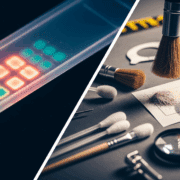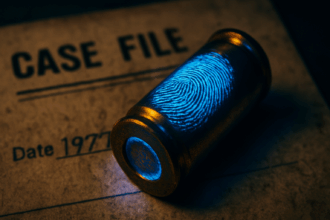Professor Advocates for SNPs Over STRs in Familial Testing to Minimize Errors
Familial testing has gained prominence in forensic science
The Rise of Familial Testing in Forensic Science
Familial testing has become a crucial tool in forensic science, aiding in solving numerous criminal cases and identifying missing persons. The method’s popularity surged notably after the Golden State Killer case. Jianye Ge estimates that familial testing has been used in over 15 million criminal cases and missing persons identifications, showcasing its widespread application and success.
STR Technology: Current Standard but With Limitations
Understanding STRs
Short Tandem Repeats (STRs) have been the standard in DNA profiling
Error Rates in STR-Based Testing
Ge and his colleagues used a 15 autosomal marker kit and calculated false interpretation rates for different familial relationships:
- Trio cases: 0.058%
- Parent-child cases: 1.14%
- Full-sibling cases: 20.82%
Even with kits containing 21 STRs, false rates were significantly high, indicating inherent issues with STR technology.
SNP Technology: A More Reliable Alternative
Advantages of SNPs
Single Nucleotide Polymorphisms (SNPs) offer a higher cumulative power of discrimination despite having lower discrimination power per locusA locus is the precise position of a gene on a chromosome. Different alleles of the same gene occupy the same locus. Read Full Definition compared to STRs. High-density SNP panels can test hundreds of thousands to millions of SNPs, significantly reducing error rates in familial testing.
Recommendations for Transition
Ge recommends forensic labs to:
- Investigate high-density SNP technologies.
- Perform cost-benefit analyses for in-house implementation or outsourcing.
- Develop standard workflows and software tools.
- Educate users on SNP technology’s strengths and limitations.
- Validate SNP-based methods to meet scientific and legal standards.
The Path Forward
Ge emphasizes the importance of validationValidation, often referred to as method validation, is a crucial process in the laboratory when introducing a new machine, technology, or analytical technique. It involves a series of systematic steps and assessments to ensure that Read Full Definition to ensure that SNP-based technologies can withstand scientific scrutiny and legal admissibility standards, akin to current forensic DNA DNA, or Deoxyribonucleic Acid, is the genetic material found in cells, composed of a double helix structure. It serves as the genetic blueprint for all living organisms. Read Full Definition testing systems. By adopting SNP panels, the forensic community can enhance the accuracy and reliability of familial relationship testing, reducing the likelihood of false interpretations.
DNA, or Deoxyribonucleic Acid, is the genetic material found in cells, composed of a double helix structure. It serves as the genetic blueprint for all living organisms. Read Full Definition testing systems. By adopting SNP panels, the forensic community can enhance the accuracy and reliability of familial relationship testing, reducing the likelihood of false interpretations.
Summary
Transitioning from STR to SNP technology can significantly improve the effectiveness of familial testing in forensic science. Jianye Ge’s research underscores the limitations of STRs and advocates for adopting high-density SNP panels to minimize errors. Forensic labs are encouraged to explore and validate SNP-based methods to ensure more accurate and reliable results.
How do you think adopting high-density SNP panels will impact the accuracy and reliability of familial testing in forensic science? Share your thoughts and join the discussion!
Paper Reference: Ge J, Budowle B (2020) How many familial relationship testing results could be wrong? PLoS Genet 16(8): e1008929. https://doi.org/10.1371/journal.pgen.1008929










